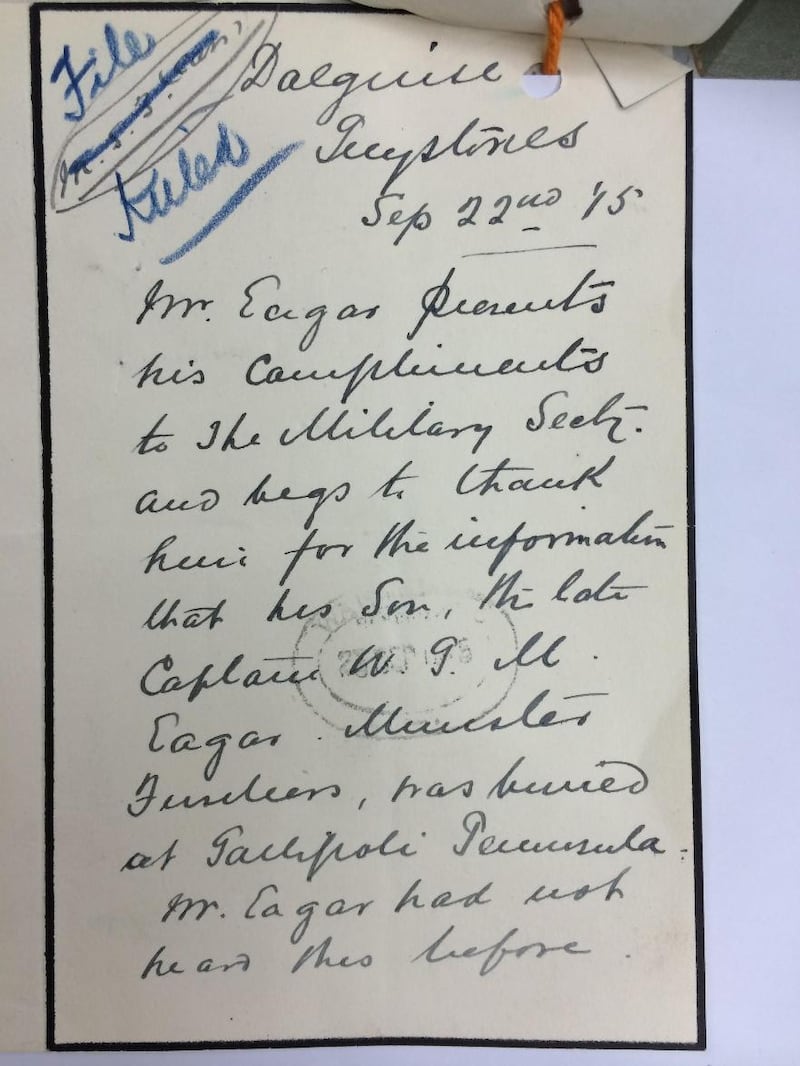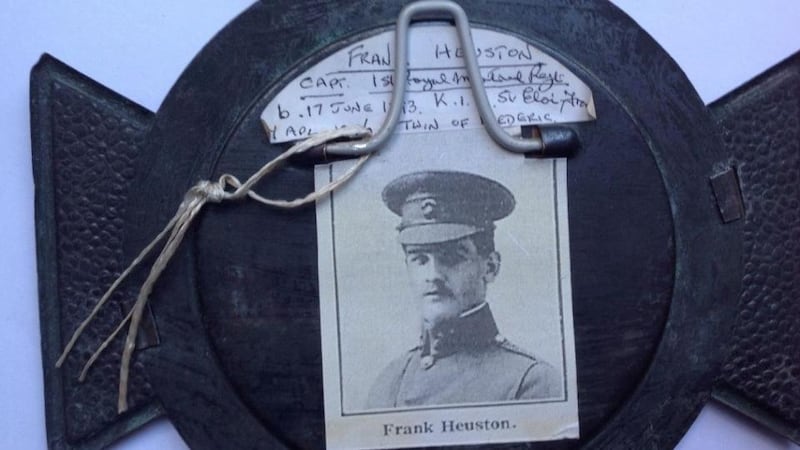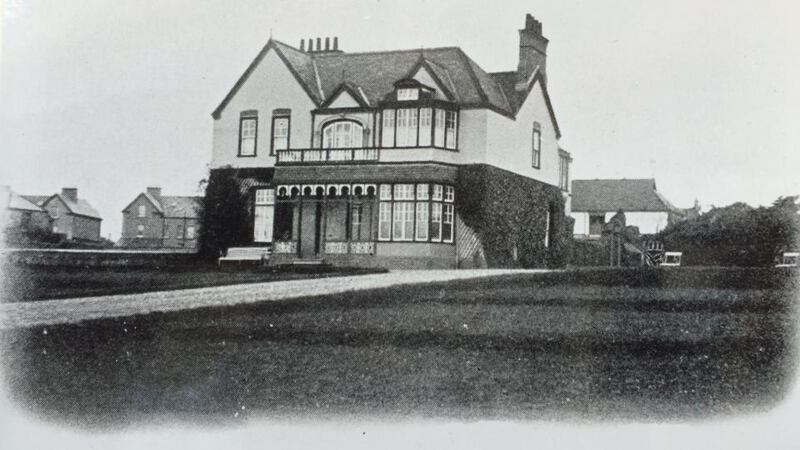
They were an interesting lot, the 22 men whose names are on a
first World War memorial


in Greystones, Co Wicklow, where I live. They include an international rugby player, an opera singer, a garden labourer, a shop assistant, a cross-country athlete, students of medicine and law, a journalist, a rancher and some professional soldiers. Their connections to Greystones were mixed: some were tenuous, others stronger and some real and permanent.
And while they are remembered by having their names inscribed on a wall tablet inside St Patrick’s Church of Ireland on Church Road, the passage of time has dimmed the details of their lives – who they were, where they lived and how they died.
For the past year or so, I have been trying to piece together as much as I can about each of the 22, with no higher ambition than that of restoring their stories to some degree of public knowledge.
Much of what can be gleaned about them comes from the 140,000 British army officer service records held by the British Public Records Office in Kew, London. Filed as WO 339/ (WO denoting War Office and 339 indicating the person was of officer rank), Kew holds files on 10 of the Greystones 22 and an 11th was obtained from Library and Archives Canada.
Files on the remaining 11 officers and lower rank men do not exist, most likely destroyed, somewhat ironically, when a German bomb hit the archives during the second World War.
Despite this, with the information from Kew and other sources, including regimental records, field intelligence reports, soldier’s diaries and the many histories of the first World War, it is possible to tell a good part of these men’s stories.
The Greystones dead include three sets of brothers, Frank and Fred Heuston, who were twins; George and Jack Duggan; and George and Mervyn Colomb. And there are also two cousins, Charles and Ernest Price.
The Heustons’ story is particularly sad, in my view. Their deaths effectively tore a family apart. The Heustons had a substantial seafront holiday and weekend home on Marine Road in Greystones, named St David’s – the name adopted by the secondary school that eventually replaced the house.
One son, Frederick Gibson Heuston (known as Fred), joined the Royal Irish Fusiliers and was part of the mass invasion at Suvla Bay on August 6th-7th 1915. Throughout the following week, he impressed his officers sufficiently to be awarded the Military Cross, but he was killed on August 15th.
Fred’s father was Dr F.T. Heuston, one-time chairman of Dublin’s Adelaide Hospital and also Professor of Anatomy at the Royal College of Surgeons, across the other side of St Stephen’s Green from where he kept his city home. The first word to reach him was a telegram to the effect that Fred had received unspecified wounds.
There followed several frantic telegrams from Dr Heuston to the War Office seeking to know the nature and position of the wound. Throughout September and October he kept up the pressure for information but got none.
In November, Dr Heuston died aged just 58. The report of his death at home reads as though it was sudden and there must arise the suspicion, at the very least, that distress about Fred was a contributory factor.
Mrs Heuston – Frances Letitia Heuston – and her daughter, Frances Elizabeth, had now lost their husband and father, as well as their son and brother.
But it got worse.
Fred’s twin brother, Francis Robert Heuston (known as Frank), had enlisted from Canada and was with the 14th (Montreal) Battalion on the Western Front. In April 1916 at Arras, a sniper shot him in the head and killed him.
Twin sons and a father – all the men of a family, gone in the space of eight months and with them a family’s life that must have seemed golden before the war.
The Heuston’s story is not unique – far from it, as can be seen from almost any of the first World War memorials with their repeating surnames indicating fathers, sons, uncles and nephews from the same family all killed.
But the stories become poignant when details, faces and homes can be matched to the names. In several instances, the Greystones men who died were only sons, sometimes of widowed mothers.
Captain Arthur Moore O'Sullivan, who was connected to a house on Burnaby Road and was a career soldier, was an only son. His late father had been Advocate-General in Madras. Son Amos (as he was known to his men) had fought in South Africa and in the Great War became a witness to the extraordinary scenes in No Man's Land at Christmas 1914 as ad hoc truces broke out and soldiers emerged from trenches to sing and exchange gifts.
The Colomb brothers, opera singer Mervyn and car mechanic/journalist George, were the only sons of a widow, Maud, who lived in a substantial home, Rossleigh, at the corner of Church Road and Church Lane (now known as Eyrefield).
Mervyn was killed at Ypres in May 1915. George lasted longer: having taken part in several battles on the Western Front, he transferred to the Flying Corps but in November 1916, on only his second flight, he was killed.
The service records reveal something of the attitudes of the time. Ivon Henry Price, an Irish policeman who became head of military intelligence in Dublin Castle during the Rising, lost his son, Ernest Dickinson Price, just before the rebellion. The telegram containing the grim news had the stock line: “Lord Kitchener expresses his sympathy.”
This prompted Mr Price to send a letter back with the sole purpose of acknowledging receipt of the telegram but stating also: “I have to express my gratitude to Lord Kitchener for his kind sympathy.”
Perhaps Lord Kitchener really did read such letters but it seems rather unlikely.
The style of writing in some of the letters, and the language employed, is also very much of its time. Nonetheless, the contents can still be disconcerting when one considers the subject matter.
"Mr Egar presents his complements to the Military Secretary," the father of young William George Massy Egar wrote in September 1915, referring to himself in the third person, shortly after his son had been killed at Gallipoli, continuing: "and begs to thank him for the information that his son, the late Captain WGM Eagar, Munster Fusiliers was buried at Gallipoli Peninsula. Mr Egar had not heard this before."
In fact, young Captain Eagar (he was 23) was not buried: his body was never positively found and was either blown to bits, eaten by the flies that plagued Suvla Bay, or buried as an unknown soldier, like many thousands of others were in Gallipoli. But he is, like many others who died in Gallipoli, remembered at the Helles Memorial above the tiny beach at Sedd-ul-Bahir.
The tangled mix that is modern history is also evident in several of the stories. For one family, while their son was fighting in Gallipoli, his cousin was plotting to run guns for the Irish Volunteers. And for another, having lost two sons for King and country, a father narrowly escaped being shot in 1916 – by soldiers of his dead sons' army. Peter Murtagh is presenting Softly March Away: Greystones and the Great War, the stories behind the names on the tablet, tonight, November 8th, at 8pm in St Patrick's Church, Greystones, Co Wicklow, with period accompaniment from mezzo-sporano Dara MacMahon, baritone Rory Musgrave and pianist Svetlana Rudenko.
Tickets, subject to availability, €10 from Mooney’s, Trafalger Road, and Greystones Antiques by the Dart station, and at the door.










